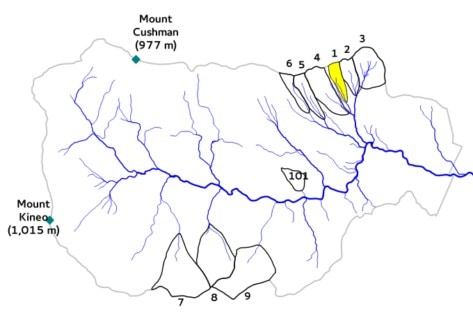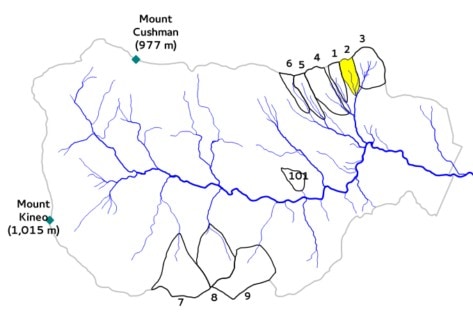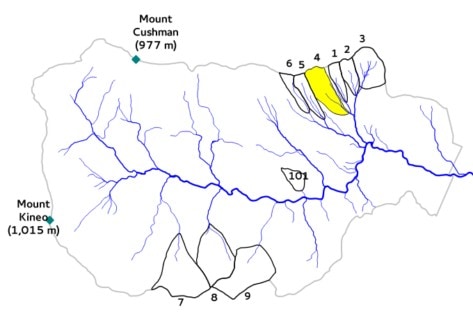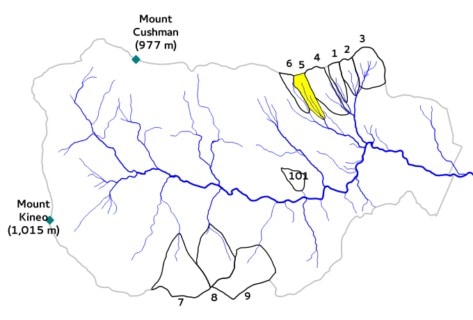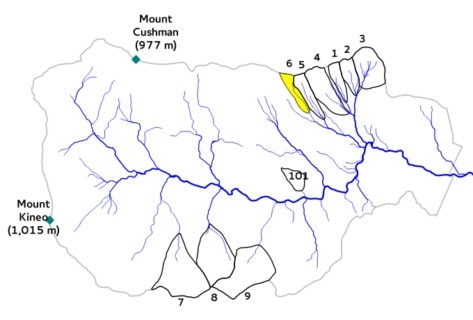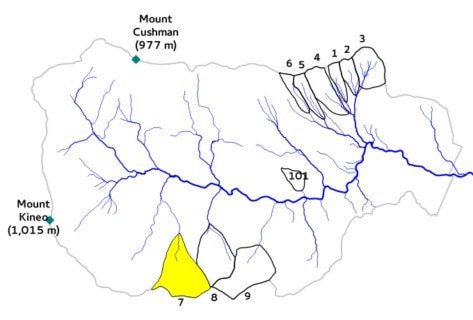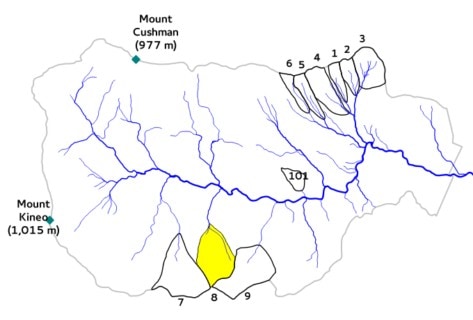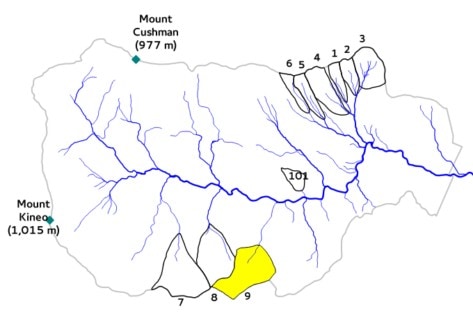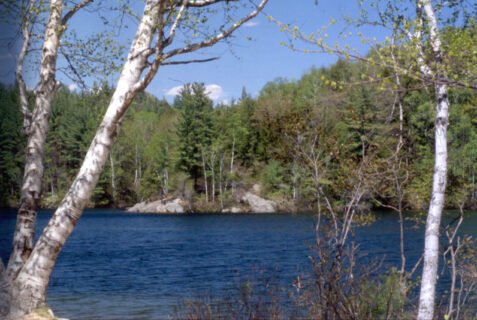Watershed 1
A wollastonite addition (CaSiO3), was applied by helicopter in a effort to replace the calcium that has been depleted from soil due to inputs of acid rain.
Watershed 2
To assess the ecosystem response to deforestation, Watershed 2 was devegetated for a 3 year period (1965-1967).
Watershed 3
Watershed 3 is used as a hydrologic reference watershed.
Watershed 4
The watershed 4 experiment was designed to study how strip cutting affects nutrient and hydrological cycling and stand regeneration relative to clearcutting.
Watershed 5
This experimental watershed treatment consisted of a whole-tree harvest in 1983-1984.
Watershed 6
Watershed 6 serves as a biogeochemical reference watershed.
Watershed 7
Long-term monitoring of streamflow, stream chemistry and meterology has occurred since 1965 in this watershed, with no experimental treatment.
Watershed 8
No experimental treatments have occurred in this watershed. Long-term monitoring of in the watershed has occurred since 1968.
Watershed 9
No experimental treatments have taken place in this watershed.
Watershed 101
The Watershed 101 treatment was block clearcutting in 1970, with research on watershed hydrology and nutrient flux and cycling.
Valleywide Permanent Plots
Fifteen North-South transects were established at 500m intervals to span the entire Hubbard Brook Valley. Between 1995 and 1997, 371 plots were positioned at 100m and 200m intervals along each transect.
Mirror Lake
Mirror Lake is located within the Hubbard Brook Valley, NH and has been the subject of numerous continuous limnological investigations since the early 1960s.

